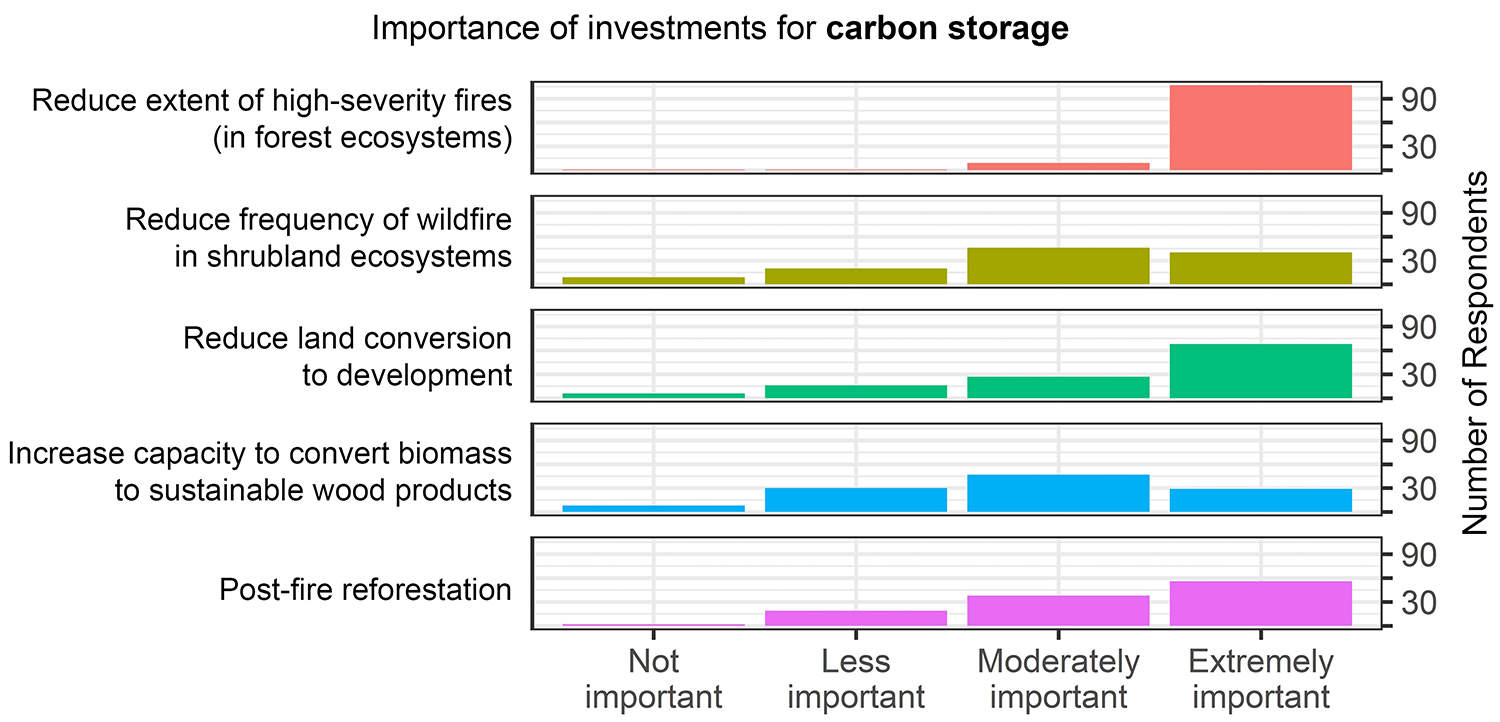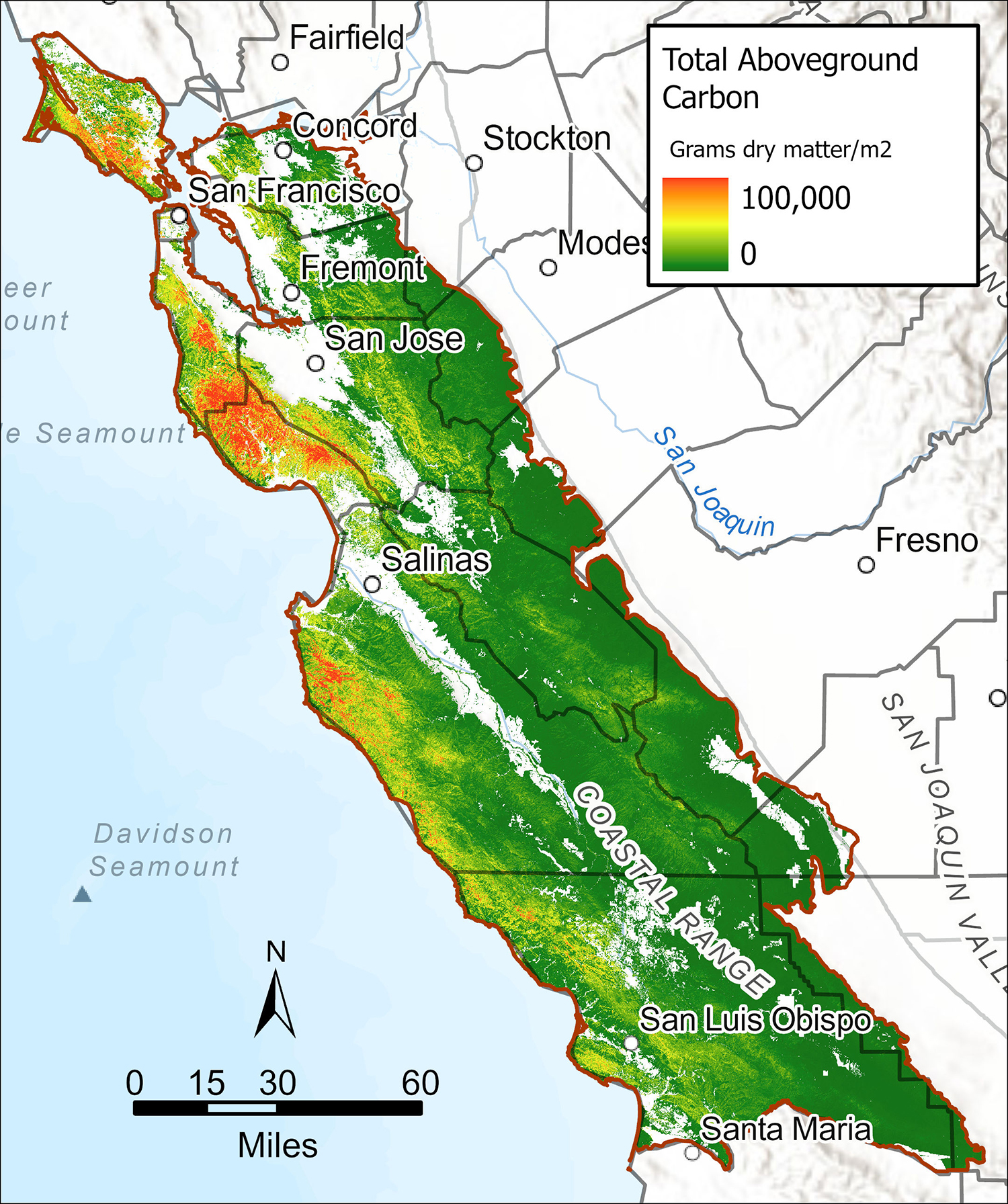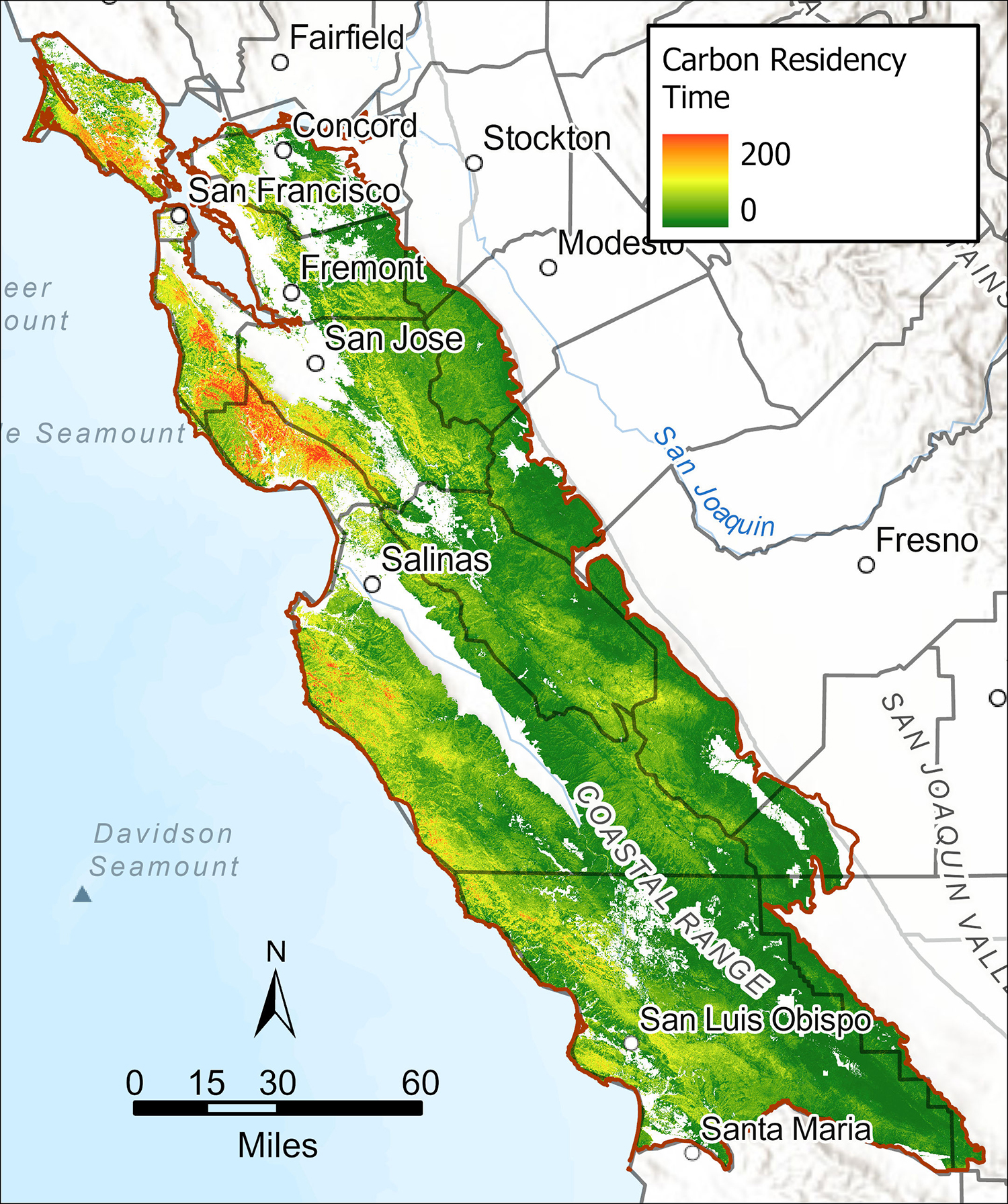Central Coast Regional Profile
Carbon Storage

Photo credit: Ken Collins, Elkhorn Slough Foundation
Overview
Managing natural and working lands to increase sequestration and storage of carbon is considered to be a relatively cost-effective strategy to help mitigate climate change and essential to California’s efforts to achieve carbon neutrality. Forest and shrublands comprise approximately 85 percent of California aboveground and belowground carbon stocks. Wildfire threatens these carbon stocks because when vegetation burns, not only is some carbon immediately released via combustion, but also live pools of carbon can rapidly convert to less stable dead pools. As vegetation decays, stored carbon is released into the atmosphere. Regrowth sequesters carbons by turning it into new plant material and is critical to future carbon storage potential.
When ecosystems burn at greater frequency or higher severity over a larger area than they are adapted, carbon stocks become more vulnerable to loss. For example, when seed banks are burned before they have sufficiently matured, vegetation might be unable to reestablish. Reforestation and other restoration efforts might be necessary to assist ecosystem recovery and promote continued carbon sequestration and carbon stability.
Coast redwood forests are generally adapted to fire [see ‘Healthy and Resilient Forests’] and are notable for having the highest aboveground carbon density of any ecosystem on earth. When the 2020 Big Basin Fire burned old-growth redwood stands at higher severity than their historic fire regime, live carbon stocks that had been accumulating for centuries were reduced. Most of the ancient redwood trees appear to have survived, and many trees throughout the burned area are resprouting. However, post-fire regrowth of injured trees has been slower than expected, reducing carbon sequestration. Restoration efforts are monitoring regrowth and considering management actions that can make redwood forests more resilient to future fire and climate change.
Storing carbon in Central Coast grasslands may be increasingly important for California carbon goals because carbon in these systems is primarily stored underground in root biomass, making it less vulnerable to wildfire. Management actions such as adding compost have been found to increase soil carbon storage and plant growth, while also having a lower net greenhouse grass emissions than other waste management approaches (e.g., landfilling). However, adding compost can have deleterious effects on native grassland diversity or cause pollution if not applied appropriately.
Applying biochar amendments can also add valuable nutrients and moisture retention to the soils of grasslands, stimulating growth to store more carbon. This is in addition to the storage benefits of biochar itself, which is created from plant waste materials and transfers that carbon into much longer term storage into the soils of the grasslands it is added to. Biochar is produced by heating plant biomass at high temperatures in a low oxygen environment to create a special form of charcoal. In addition to providing a soil amendment, biochar also has other applications because of its ability to absorb chemical contaminants. The Elkhorn Slough Foundation in the Monterey Bay Area is currently piloting a project that uses a mobile kiln to convert removed eucalyptus tree logs into biochar as a way to store carbon from their habitat restoration projects. As part of the project, they are also testing the benefits of biochar for increasing the soil health of farmland and filtering agricultural wastewater. A recent study surveying California biochar producers found that the biggest barrier to biochar market success is capital investment for scaling up production, followed by market and demand. Providing producers with revenues from carbon offset credits, increasing awareness of the application potential of biochar, and improving production processes, were identified as key strategies for commercializing biochar.
Stakeholder Perspectives

Survey respondents were asked how important potential areas of investment are for achieving large and stable carbon stores in their county or region. The majority of respondents rated reducing the extent of high-severity fire in forest ecosystems as extremely important for achieving this outcome. Several other potential areas of investment were perceived on average to be moderately important, and reducing the development of natural lands was rated as extremely important by many respondents. Increasing capacity to convert biomass to sustainable wood products was rated as slightly less important than the other options.
Interview findings: Interviewees highlighted that local agencies and land management partners are working on carbon planning and increasing carbon sequestration in soil. Many interviewees mentioned the challenge of dealing with plant biomass after vegetation has been treated. They have generally relied on chipping and pile burning because they would otherwise need to haul it far off-site for the plant waste to be used for power generation or composted. Several groups are exploring biochar production to help address this issue and reduce carbon emissions. Biochar is being produced by burning plant matter removed in vegetation treatments in carbonators. Using a carbonator produces fewer smoke emissions than pile burning, and by only partially burning the material to create biochar, some of the carbon pool is retained. There is some interest from farmers in using biochar, but there is no consensus on which crops can benefit from it. Interviewees also commented on the need to understand whether biochar applications are ecologically suitable at large landscape scales or what the unintended consequences might be.
Resource Conditions


Carbon storage on the landscape can be assessed via total aboveground carbon (top) and carbon residency time (bottom). The total aboveground carbon is the amount of carbon present in all live and dead trees, shrubs, herbaceous vegetation, and dead material. Total aboveground carbon is important because preserving carbon stored in natural systems is generally desirable for climate change mitigation and forest management goals and, therefore, understanding the magnitude of carbon stored on a landscape may help inform the location and type of treatment activities. Carbon residency time is the average number of years both aboveground live and dead carbon persists. Locations with longer residency times have more stable carbon stores, often in large trees; areas with shorter residency times may have high frequencies of severe disturbance or more carbon stored in forms such as leaves. The presence of coast redwood forests and other large trees in Santa Cruz and Monterey is reflected in the large total carbon stores and over 200 year average residency time of these counties.
